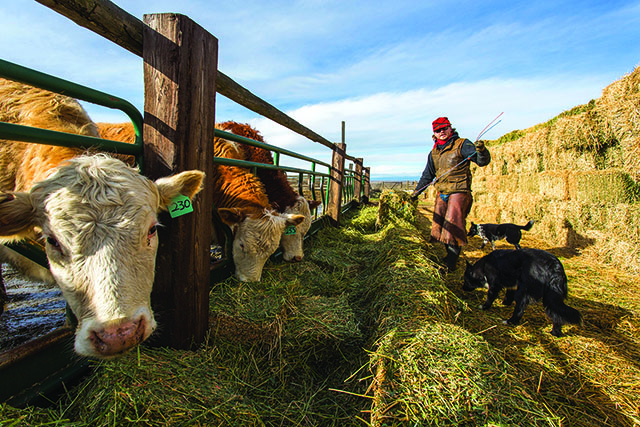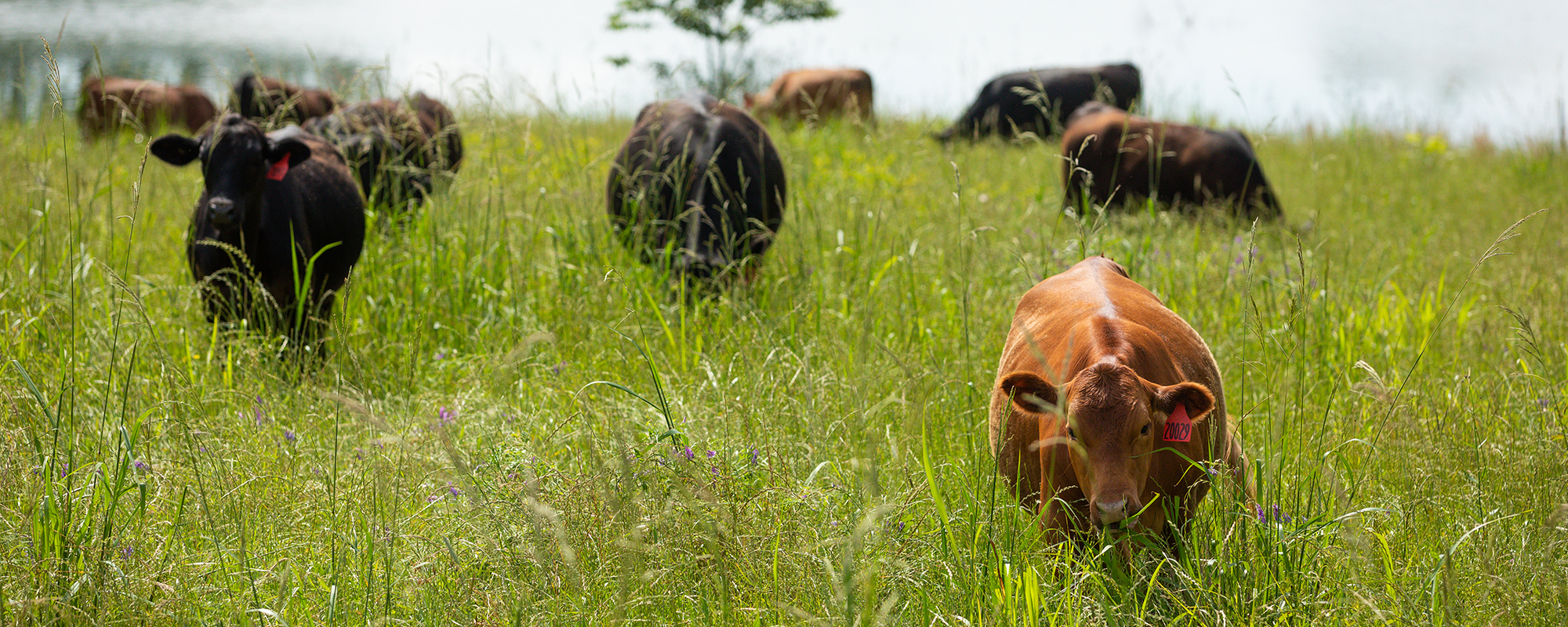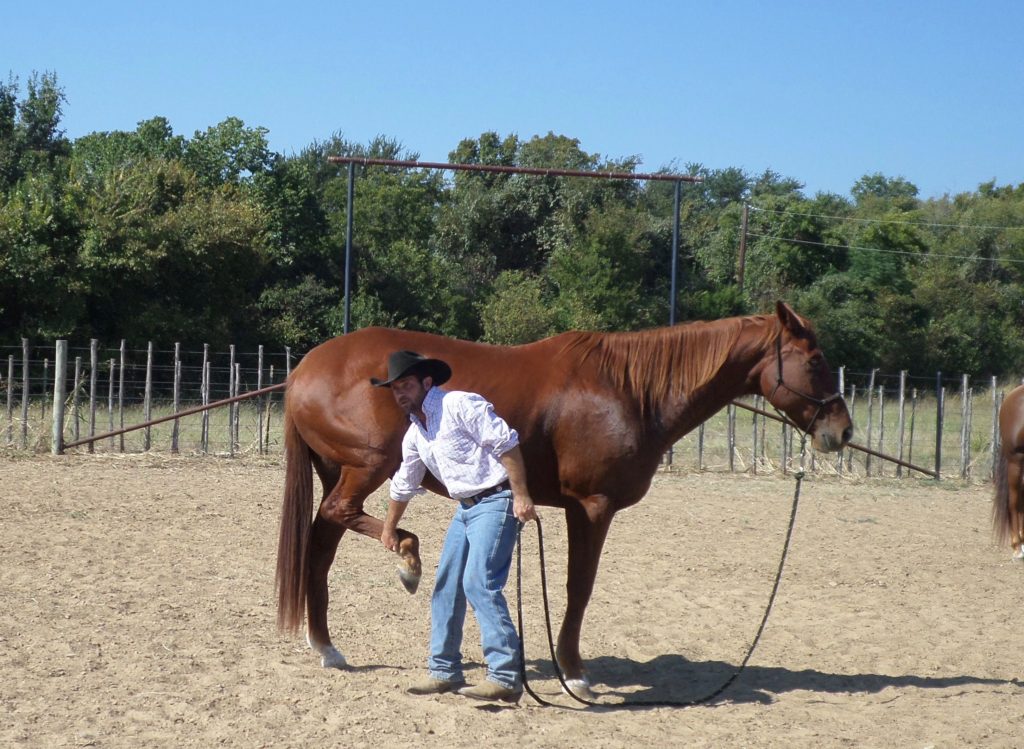HOME
The Natural Horseman – Horses that have trouble being trimmed

By Steve Stevens
So often we get horses in training or have someone ask us what to do about their horses that throw fits with their farrier. The horses won’t stand still, pull back, won’t pick up their feet or even can strike and kick. Their farrier is always upset, doesn’t want to work on their horse or even worse, because the horse is giving them a rough time, the farrier takes his frustration out on the horse.
There are a few factors here that need to be dealt with.
The first is for the owner to understand that for a lot of horses, having their feet worked on can be very stressful and overwhelming. Most farriers don’t have the time and/or patience to go slow and help train your horse. The only way they can make a living is to hurry up and move on as soon as possible to get to the next horse. So it now becomes OUR responsibility to prepare our horse. If your horse won’t stand still for you to pick up all four feet, and clean their hooves out with a hoof pick, they probably aren’t ready for the farrier who will be in a rush, will have multiple clanging tools and will be asking your horse to get into fixed positions.
We must be consistent with picking up our horse’s feet and letting them get comfortable with that. If your horse is giving you a rough time or you are scared to pick up their feet, you must find a professional to help.
With all the problem horses I have worked with, one of the most important philosophies we have learned and practiced is a very simple concept:
IF YOUR HORSE WON’T STAND STILL FOR YOU TO PICK UP HIS FEET, GROOM HIM OR SADDLE HIM NOT BEING TIED, THEN HE IS NOT READY TO BE TIED UP.
See, when a horse is tied hard, we take away their ability to move their feet.
So if they get scared, they are trapped and most often will fight, pull back, fall down, kick and get worse at the task at hand. How many times have you tied up your horse hard and he got scared and fought it, got through it for the time being, but then when you come back another day he has the same issues?
We need to understand how horses process their thoughts. A horse feels safer when he has the ability to move his feet. It’s easier for him to work through things. Once we take that ability away, he will most always fight if he gets scared or bothered. So before we ever tie him up, we must learn how to do these tasks with him untied.
I know this goes against all the old school techniques. But trust me…we get the horses in training after the old school techniques don’t work…after horses have pulled back, broke multiple halters, split their heads open, nearly killed the farrier and/or yourself.
The second factor is that owners need to have the courage to stand up to their farrier if they see things are getting out of control. If a horse is getting more scared, and the farrier is getting more upset, it is ok to say, “That can be enough for today, let me work with him a little bit more before he or she gets anyone hurt.” So what if your horse’s feet get a little long and you have to pay a bill? It is better than the alternative of being scared to death every time he gets trimmed.
If you have a farrier worth his salt, he will be appreciative that you don’t want him to get killed today trimming your horse. If he tells you otherwise, it’s probably time to find another farrier. I can’t tell you how many times clients have brought me horses that have foot issues, can’t be tied or go running to the other side of the pen when the farrier comes. The client often tells me something like, “I knew it was getting worse every time my horse got trimmed, but I just felt bad to stop using my farrier. He is a really nice guy.” We must find the strength to do what is right for the horse and if you have to go through five farriers to do so, that is fine.
I probably sound like I am bashing farriers right now, but actually I have more respect for a farrier’s profession than anyone. It is not easy to have to get under crazy horses all day long in the elements. I have been blessed to know a handful of amazing farriers who are always on time, patient, knowledgeable and understanding. They know that if they are going to work on your horse for the next twenty years, that if they take their time the first couple of times, it should be easy for the next two decades.
The third factor is to do the training with a horse that is having a hard time. If a horse nips, or kicks, leans or won’t stand still, we must try our best to correct the issue.
The easiest way to do this is to move their feet, to make them work, hustle them by lunging, doing rollbacks, driving their hindquarters around.
I will give you an example. If I were holding a horse for the farrier and she kicked or tried to bite him, I immediately would start lunging that horse, making it work. That is how we can make the wrong thing difficult. So make sure your horse can lunge well, change directions and back up well on a lunge line.
THE NEXT TIME YOUR HORSE GIVES YOU OR THE FARRIER A TOUGH TIME, PUT IT TO WORK.
The more aggressive the behavior, the longer I will hustle them. The toughest part about this exercise is having the wind to really put some effort behind this and hang in there long enough that they get the point. Once you are done, bring them back to where you started and go back to work like nothing ever happened. This may take two to three times to really take effect, depending on your ability and expertise.
Just remember, if things are going bad when getting your horse’s feet done, it will only get worse if you don’t work on fixing the problem.
Have faith that there are amazing farriers out there and take the time to find them.
HOME
Farm and Ranch Injuries

By Barry Whitworth, DVM
In January, I attended the Oklahoma Veterinary Conference. While waiting for one of the sessions to start, a classmate of mine commented how many of the attendees walk with a limp, used a cane, and/or have damaged hands. We all agreed that working with animals is hard on the body. In general, anything associated with farming and ranching is dangerous.
Most farmers and ranchers know that agriculture is a dangerous occupation. According to United States Bureau of Statistics, workers involved in agriculture, forestry, and fishing had the highest occupational fatality rate in 2022. The fatality rate of 23.5 per 100,000 full-time equivalent (FTE) workers for this group is much higher when compared to the overall occupation fatality rate of 3.7 per 100,000 FTE. Most of the agriculture-related fatalities are associated with transportation, such as tractor overturns, and vehicle crashes, but a fair number involve livestock.
To read more, pick up a copy of the March issue of NTFR magazine. To subscribe by mail, call 940-872-5922.
HOME
Jesses Jewelz

By Jesse Kader
Comfy and keep it western. That’s the name of the game this month. It’s hot and who wants clingy clothing? This jumpsuit is perfectly comfortable and relaxed without forfeiting the fashion. Dress it up or keep it casual. See this and more at www.jessesjewelz.com.
HOME
Noble Research Institute Expands New Program Offering Farmers and Ranchers the Essentials of Regenerative Ranch Management

The educational program has been expanded to three new locations, empowering ranchers and farmers to monitor and improve the health of their land, livestock and livelihood through regenerative principles.
ARDMORE, OK–September 12, 2023 – Noble Research Institute announced the expansion of Essentials of Regenerative Ranching, a new educational program designed to help ranchers enhance and restore the land, making it more resilient and reaching livestock grazing goals through regenerative management. Essentials of Regenerative Ranching provides producers with practical tools, hands-on experience and guidance to make data-driven decisions to decrease costs and improve profit.
The Essentials of Regenerative Ranching course has been expanded to three new locations in Texas and Oklahoma. Registration is open now at www.noble.org/essentials. Seating is limited, so early registration is recommended.
Texas A&M
College Station, Texas
October 17 – 18
O.D. Butler, Jr. Animal Science Complex
Noble Research Institute
Ardmore, Oklahoma
October 31 – November 1
Pavilion Center
Texas A&M
Kingsville, Texas
November 7-8
Caesar Kleberg Wildlife Center
“Program participants gain working knowledge and experience of monitoring and improving the health of their soil, grazing livestock more strategically and making informed financial decisions,” said Hugh Aljoe, Noble Research Institute’s director of ranches, outreach and partnerships. “We use a mix of classroom and field work to send producers home with the tools they need to begin making changes on their ranch.”
Farmers and ranchers navigate uncertainty from weather, fluctuating market prices and escalating costs of inputs. Many producers are seeking new tools that offer greater control and reduce their operational uncertainty. Through this course, ranchers and farmers will calculate their financial situations, determine initial stocking rates, carrying capacity and grazing goals.
“The course is well-suited for ranchers of all experience levels and all types and sizes of operations,” Aljoe added. “No matter your situation, this program will transform the way you think about your ranch.”
The Essentials of Regenerative Ranching program allows producers to overcome obstacles, become more informed problem-solvers and increase the productivity of their grazing lands. By participating in this program, ranchers join a community of like-minded producers who are shaping the future of ranching and leaving a lasting impact on their land and families. “If I had known what I learned in this course when I started my regenerative journey, I could have avoided some key mistakes,” said Tana McCarter, a rancher, and Essentials attendee. “I left with the tools I needed to monitor my soil health and financial progress. I’ll now have the right data to make informed decisions on how to meet my regenerative goals.”
Noble Research Institute is an independent nonprofit agricultural research organization dedicated to guiding farmers and ranchers in applying regenerative principles that yield healthier soil, more productive grazing land, and business success.
At Noble, researchers, facilitators and ranch staff work together to share with farmers and ranchers the skills and tools to regenerate the land in a profitable manner. Noble is focused on the regenerative management of the nation’s grazing acres, which directly impacts pasture and range environments, wildlife, pecan production, and livestock production. Regenerative management recognizes that each decision made on the ranch impacts the interactions of the soil, plants, water, animals, economics and people. Noble’s 14,000 acres of working ranch lands provide a living laboratory on which to demonstrate and practice regenerative principles and ideas to deliver value to farmers and ranchers across the U.S.
-

 Country Lifestyles1 year ago
Country Lifestyles1 year agoScott & Stacey Schumacher: A Growth Mindset
-

 Equine7 months ago
Equine7 months agoThe Will to Win
-

 Country Lifestyles7 years ago
Country Lifestyles7 years agoStyle Your Profile – What your style cowboy hat says about you and new trends in 2017
-

 Country Lifestyles4 years ago
Country Lifestyles4 years agoAmber Crawford, Breakaway Roper
-

 HOME7 years ago
HOME7 years agoGrazing North Texas – Wilman Lovegrass
-

 Country Lifestyles7 years ago
Country Lifestyles7 years agoDecember 2016 Profile, Rusty Riddle – The Riddle Way
-

 Country Lifestyles8 years ago
Country Lifestyles8 years agoJune 2016 Profile – The man behind the mic: Bob Tallman
-

 Country Lifestyles8 years ago
Country Lifestyles8 years agoCowboy Culture with Clay Reid – Being a Man







